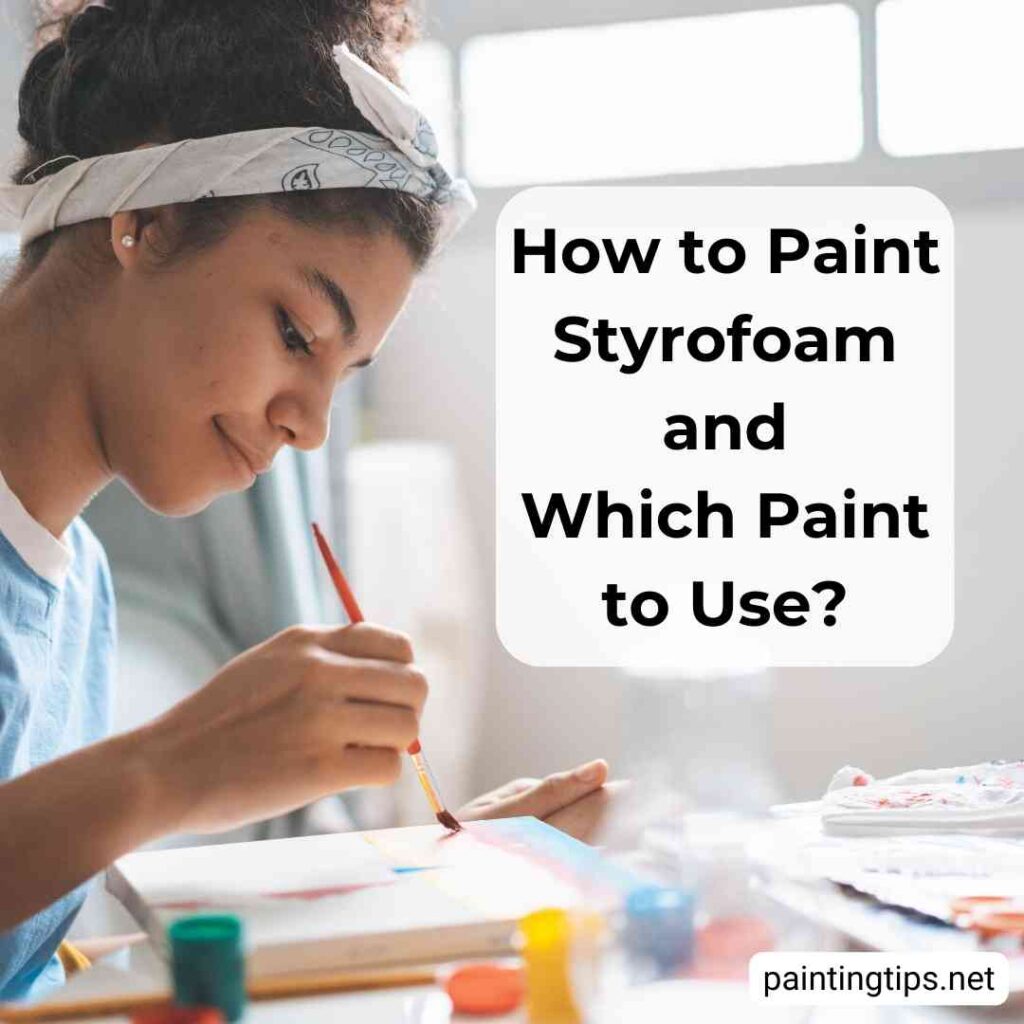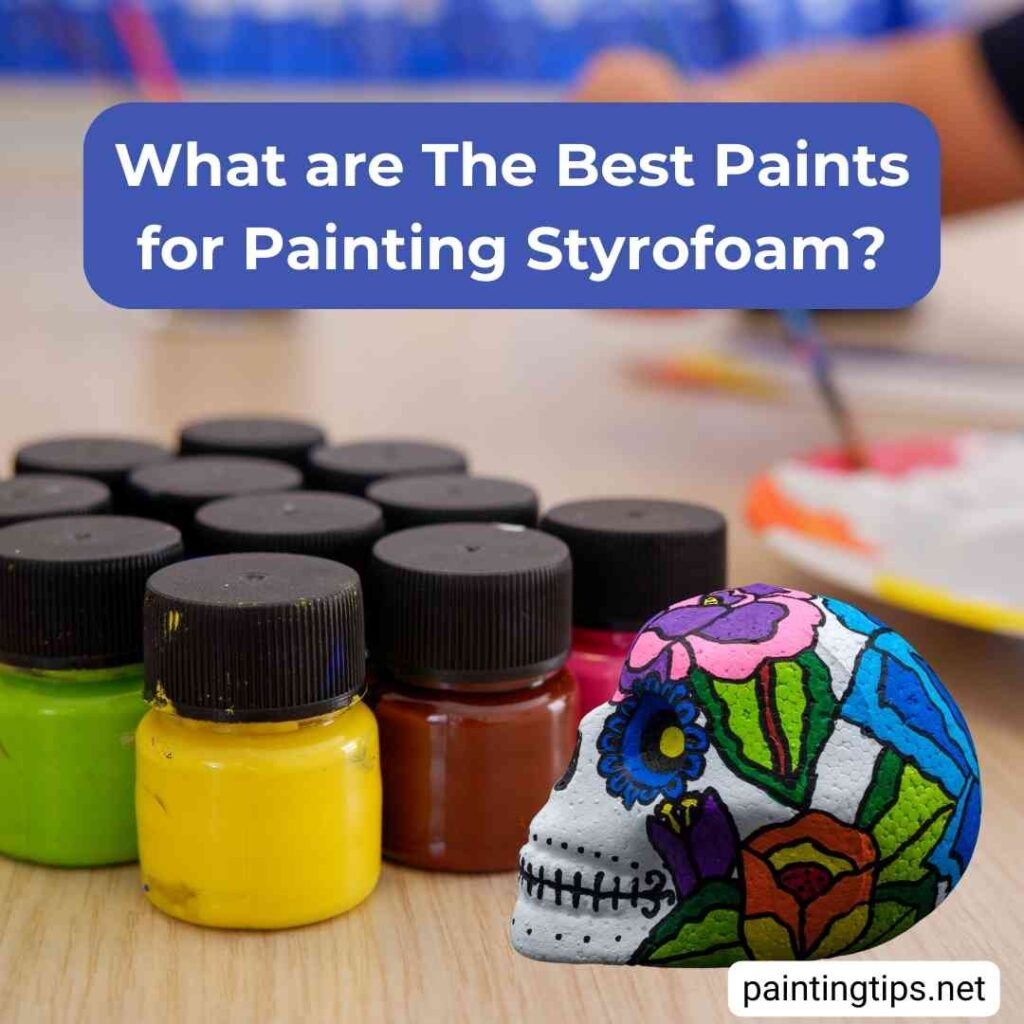Whether you’re working on a craft project, decorating your home, or tackling DIY tasks, painting Styrofoam can be tricky. Some paints can cause the Styrofoam to melt or distort, which is why choosing the right paint is crucial. In this guide, we’ll walk you through Styrofoam painting techniques, share tips on which paints provide the best results, and highlight common mistakes to avoid, ensuring you achieve smooth, professional results every time.
Styrofoam Painting

Styrofoam is made up of lightweight yet fragile expanded polystyrene beads. It has a porous surface that quickly absorbs liquids, and some paints containing solvents can cause the Styrofoam’s surface to deform. The key to successfully painting Styrofoam is to use water-based paints and, if necessary, prime the surface to prevent excessive absorption.
There are two main types of Styrofoam: soft and flexible foam, which is commonly used in crafts and packaging, and rigid, high-density foam, typically used for insulation and architectural details. Both types require similar painting techniques, but the higher-density foam tends to hold paint more effectively, resulting in a smoother finish.
What are the Best Paints for Styrofoam?

- Acrylic paints: A popular choice for crafts and decorations due to their vibrant colors and quick drying time.
- Wall and ceiling paints: Great for large styrofoam panels or decorative molding.
- Latex paints: Provide flexibility and excellent coverage, making them suitable for both indoor and outdoor projects.
- Fully acrylic spray paints: Ideal for achieving smooth, even coats, especially on complex shapes.
- Water-based exterior paints: Suitable for outdoor applications, but may leave a slightly rough finish.
- Water-based hobby paints: Easy to work with and great for smaller decorative projects.
- Insulation paints: Perfect for functional applications, especially when styrofoam is used as thermal insulation.
- Water-based effect paints: You can apply water-based effect paints on rigid styrofoam. It will work even better, especially if you use a primer before painting.
Paints to Avoid
- Solvent-based paints: These dissolve styrofoam and create holes or deformations.
- Cellulose and synthetic paints: Cause shrinking or cracking of the material.
- Modified acrylic sprays with solvents: Though they may seem similar to fully acrylic sprays, they can damage the foam. “This article might be helpful for you: Oil-based stain vs water-based.”
How Do You Prep Styrofoam for Painting?
In most cases, minimal preparation is needed. Light sanding and applying a primer can improve the finish, especially for high-detail projects.
What is The Best Primer for Styrofoam?
Acrylic and latex primers are ideal for styrofoam. They improve paint adhesion and create a smoother finish. They also do not damage the surface of the Styrofoam. “For more information, read the article: What does primer paint do?”
How to Paint Styrofoam?

1-Sand the Styrofoam Surface if It is Rough
If the surface of the foam is rough, lightly sand it with 200-220 grit sandpaper to smooth out any imperfections, and wipe away the sanding dust with a dry cloth. This will help you achieve a flawless finish after painting the foam.
2-Apply a Primer
Use a water-based acrylic primer to cover the styrofoam surface. The primer reduces the foam’s absorbency and helps achieve a smooth surface. While optional, we recommend priming the foam for projects that require multiple coats of paint. “Related article: Is primer necessary before paint?”
3-Let the Primer Dry
Wait 5-6 hours for the primer to dry. This step ensures that the paint is not absorbed too quickly and helps the dark-colored foam cover more easily. “Related article: Painting over dark color without primer.”
4-Apply the First Coat of Paint
Use a brush or roller to apply the first coat of acrylic or latex paint. For large Styrofoam surfaces, a short-pile roller is a good choice, while a brush is better for painting textured styrofoam.
5-Let the First Coat Dry
Wait at least 5-6 hours for the first coat to dry before applying the second coat. Since styrofoam is painted with water-based paints, the first coat will dry quickly.
6-Apply Additional Coats if Needed
Apply a second or even third coat for optimal coverage. Be sure each coat on the styrofoam is completely dry before applying the next one. After the final coat has dried, you can apply a water-based varnish to protect the paint on the styrofoam.
Advanced Tips
- For the first coat, thin the paint: If you don’t want to use a primer on the Styrofoam surface, thin the paint with 15% water for the first coat. This helps prevent the foam from absorbing too much paint.
- Use a varnish for durability: To protect the paint on the Styrofoam surface, apply a water-based varnish 24 hours after the final coat. This adds shine and makes the paint more resistant to wear.
- For outdoor use: If your Styrofoam project will be exposed to the elements, choose water-based exterior paints and seal the Styrofoam with a water-based varnish after painting for added durability.
Frequently Asked Questions
Can You Use Watercolor on Styrofoam?
Yes, but it may absorb too quickly. Applying a primer first or using multiple layers can improve the result.
Is Acrylic Paint Safe for Styrofoam?
Yes, acrylic paint is one of the best options for styrofoam. It’s available in a wide variety of colors and won’t cause any deformation.
Can You Use Food Coloring on Styrofoam?
While food coloring can work, acrylic paints are more practical and durable for most applications.
Is it OK to Spray Paint Styrofoam?
Yes, but only with fully acrylic water-based spray paints. Avoid solvent-based spray paints, which can melt the foam.
Can You Paint Styrofoam Without Primer?
Yes, though the foam may absorb the first few coats of paint. Thinning the first layer with water can help, or you can simply apply more coats to build up coverage.
How to Paint Styrofoam Without Melting?
Always use water-based paints and avoid solvent-based products to prevent melting or warping.
Does Acrylic Paint Stay on Styrofoam?
Yes, acrylic paint adheres well to styrofoam. For added durability, you can apply a coat of water-based varnish after the paint dries.
What Kind of Paint do You Use on Styrofoam?
You can paint styrofoam with all types of acrylic, latex and acrylic paints and interior and exterior water-based paints.
How do You Make Styrofoam Smooth and Paintable?
After sanding the styrofoam with 200-220 grit sandpaper, apply a water-based primer.